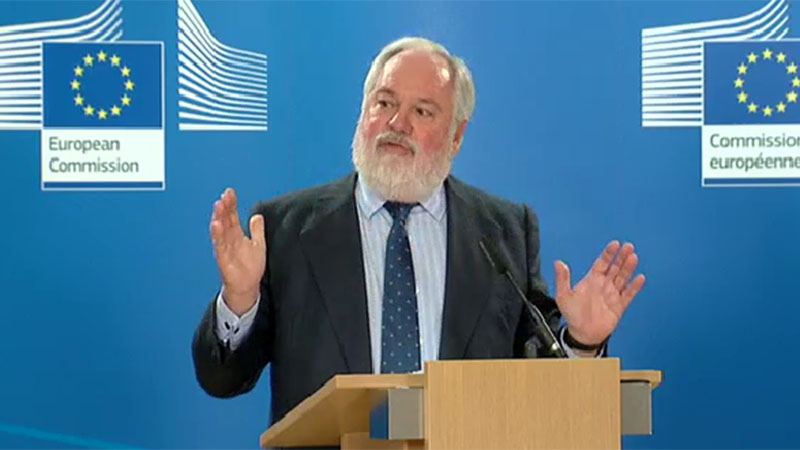EU plans to cut greenhouse gas emissions from transport, buildings and farming through to 2030 have landed.
The European Commission launched its “summer package” on Wednesday, which covers around 60% of the bloc’s emissions.
Maros Sefcovic, vice president for energy union, told journalists he wanted the EU to be a trendsetter and “create the jobs of the future”.
Green groups said the EU was not living up to its membership of a “high ambition coalition” in Paris, where it pushed for an ambitious climate agreement last December.
Under the UN pact, countries agreed to hold global warming “well below 2C” and aim for 1.5C – a tougher goal than the EU plans were based on.
Weekly briefing: Sign up for your essential climate politics update
“The proposal lacks a crucial element that would allow to automatically strengthen inadequate national targets when the overall EU commitment is revised,” said Wendel Trio, director of Climate Action Network Europe.
“After all the rhetoric on the need to increase ambition through regular reviews that the EU pushed for in Paris, failing to include a review mechanism in our own laws sends a wrong signal abroad.”
The baseline for action was not as ambitious as it could be, warned others.
And “flexibilities” allow countries to count a total of 100 million tonnes of surplus emissions credits in the carbon market and 280Mt from forestry towards their goals. The biggest carve-outs go to Ireland, Denmark, Luxembourg, Latvia and Lithuania.
Femke de Jong from Carbon Market Watch said: “Loopholes risk preventing the real-world delivery of this insufficient target by allowing countries to cheat their way out of their climate commitments.”
Driving Europe’s low-carbon transition: new 2030 targets are fair, flexible and realistic https://t.co/bXR7UeBLtc pic.twitter.com/4McGhwR2yp
— Miguel Arias Cañete (@MAC_europa) July 20, 2016
Politically, the hottest topic is how member states share out the target. Wealthy Sweden and Luxembourg must make the biggest cuts in these sectors of 40% from 2005 levels by 2030.
Bulgaria need only keep its emissions flat. Poland, which was reportedly lobbying for the same zero target, must cut 7%, a number that did not go down well with the government in Warsaw.
PL #ENVI Ministry on #EUESR proposal: #Poland cannot take such an effort. nonETS goal for PL should be fair & doable https://t.co/zKix1rR0J4
— Julia Michalak (@Julia_Michalak) July 21, 2016
Norway and Iceland plan to join in the low carbon programme from outside the EU, with Oslo aiming for the upper end of ambition.
“The national binding targets we are proposing are fair, flexible and realistic,” said energy and climate commissioner Miguel Arias Canete in a statement.
“They set the right incentives to unleash investments in sectors like transport, agriculture, buildings and waste management.”
EU decaf: UK could copy Norway’s climate policy, say ministers
The sheaf of documents was silent on the impact of Britain’s impending departure from the 28-country bloc, however.
“From a legal point of view, the outcome of the referendum has not changed anything,” said Canete at a webcast press briefing.
With a -37% target, the UK is doing more than average across the EU. It remains to be seen whether it will try to stay involved with the bloc’s climate programme when it eventually leaves, which could be in 2019 or later.
If it splits off, the rest of the EU must decide whether to increase targets elsewhere, or weaken its goal of 40% economy-wide carbon cuts from 1990 levels.
